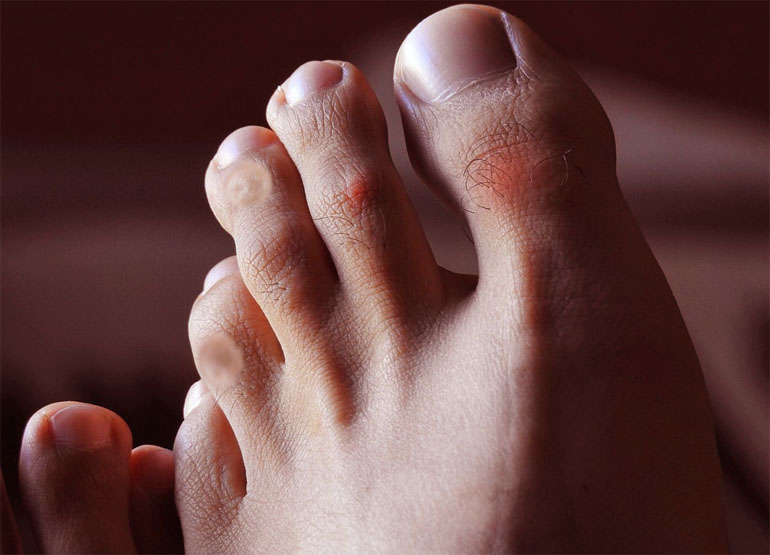Health Pages
How to Prevent Blisters
How to Prevent Blisters
Walkers will try almost anything to prevent blisters. Keep in mind that blisters are caused by friction, sweating and heat.
We all know that walking shoes must fit properly in order to avoid blisters. If they are too snug or too loose they will create a problem. Try to choose shoes that breath well, combination of leather and fabric is the best. Before every hike inspect the inside of your shoes for seams or worn areas that might produce extra friction and make sure that your heel does not slip when you walk. It is very important that you have enough room to wiggle your toes inside the toe box (calculate with about ½ inch space between your longest toe and the end of your shoe).
Always select socks that fit your foot without being too tight or too loose. Make sure that your socks are made from soft fabric, do not have bulky stitching or any holes.
Try to avoid 80% to 100% cotton socks because they tend to be a little rough after absorbing moisture. Never wear untested or unwashed socks on a long walk. Always carry a spare pair of socks when walking distance.
Researchers followed ultramarathon runners around the world to test whether low-cost paper tape could reduce debilitating and painful blisters. They found that fortunately, you can prevent blisters with paper tape, which is a reasonable solution that withstands serious mileage. Read more...
Some People Prevent Blisters with Antiperspirants
Antiperspirant reduces the sweating that creates friction, and friction leads to blisters. Wash and dry your feet every day for five to six days before a major walk, run or hike. Cover your entire foot, in between toes, tops of toes, backs of heels and bottoms of feet. Whether you use stick, spray or roll-on, just make sure you didn't miss any spot. Just one missed spot could lead to sweating and blisters. By reducing sweating, antiperspirant also helps existing foot blisters to heal faster.
Note: Unfortunately antiperspirants are not able to hold up for endurance trainings or serious mileage, and some people may develop skin irritations such as burning sensations or rashes. If you do experience a reaction, try using it every other day, use sparingly or switch brands. If the irritation doesn't stop, discontinue use.
Tips: If antiperspirant doesn't work for you because of irritation try to change your socks when your feet become sweaty or wet. You could also dust your feet and inside of your socks with talcum powder, foot powder, cornstarch or potato starch. Some people use lubricants, tapes and adhesive pads on their feet. Look in the foot care products at your local drug store.
Always carry bandage strips with you when walking distance. You could always stop briefly to put them on. If the edge of the insole or seam of your shoe is rubbing against your foot, try also lubricating or covering that area in order to prevent blisters.



